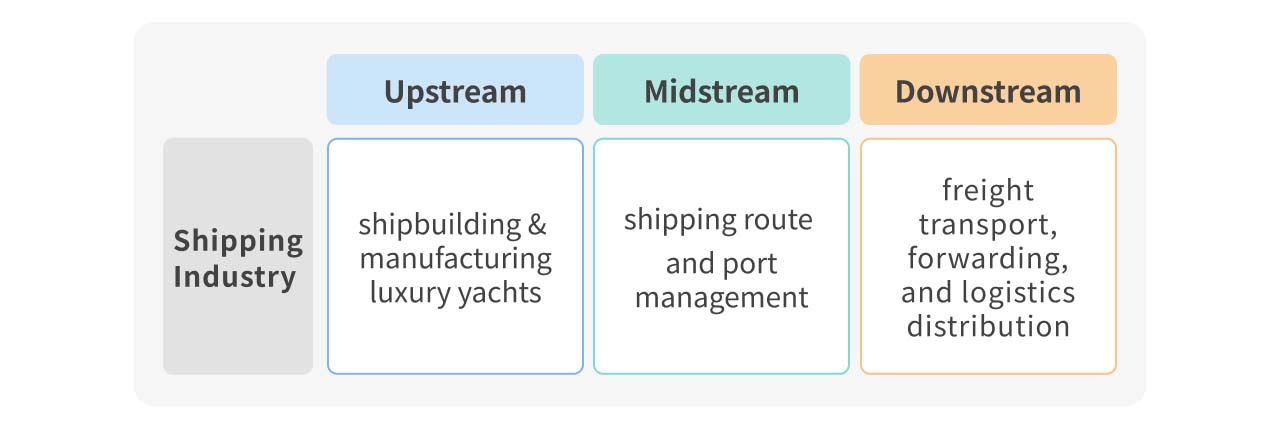The shipping industry can broadly be divided into five key areas: container shipping, bulk shipping, sea/land/air freight forwarding, container transport and warehousing, and sea/land/air public transportation. In this article, we will provide a simple overview of Taiwan's shipping industry across its upstream, midstream, and downstream sectors.

The Shipping Industry Upstream: Primarily Shipbuilding
Facing International Competition, Moving Towards Transformation
The upstream segment of the maritime industry primarily consists of shipbuilding and maintenance companies. In Taiwan, large companies include CSBC Corporation Taiwan (2208), Lungteh Shipbuilding (6753), Jong Shyn Shipbuilding (2644), Alexander Marine (8478). Positioned at the top of the supply chain, these companies receive more orders when the economy recovers and improves. However, with increasing competition from China and South Korea, as well as rising costs, Taiwan’s shipbuilding industry has seen a decline in merchant vessel production in recent years. Companies like CSBC have shifted their focus towards government-backed projects such as domestically built naval vessels, military ships, and offshore wind energy or high-margin, customized products.
The Shipping Industry Midstream: Shipping Route and Port Management
Shipping Companies Focus on Sea Transportation
In the midstream sector, the most well-known entities are shipping companies and port operators.
Shipping companies focus on transporting goods internationally, earning revenue from freight charges, while port operators generate income from port fees and container yard services. Both sectors are highly influenced by supply and demand, making their performance closely tied to economic cycles.
Shipping companies can be divided into container shipping and bulk shipping, depending on their fleet. Container shipping mainly involves transporting technological components, consumer goods, and other products. Taiwan's famous "container shipping companies" consists of Evergreen Marine (2603), Yang Ming Marine Transport (2609), and Wan Hai Lines (2615). Bulk shipping, on the other hand, focuses on transporting raw materials like ores, gravel, and grains. Well-known Taiwanese companies in this field include U-Ming Marine (2606), Shih Wei Navigation (5608), and Wisdom Marine (2637).
The Shipping Industry Downstream: Freight Transport, Forwarders, and Logistics
In the midstream sector, the most well-known entities are shipping companies and port operators. These companies charge service fees for storage and transportation, which forms their main revenue source. Notable container transport firms in Taiwan include Evergreen International Storage & Transport (2607), Chinese Maritime Transport Ltd. (2612), Farglory FTZ (5607).
Before the goods enter domestic market, forwarders manage tasks such as customs declaration, cargo inspection, and logistics arrangements. These administrative processes fall under the responsibility of forwarders, who earn a commission for their services. Once the forwarding process is complete, logistics companies take over to handle the final delivery of goods. Many forwarders now offer one-stop services, including logistics, customs clearance, and delivery, helping to vertically integrate operations, reduce costs, and improve efficiency. Key players include Kerry TJ Logistics (2608), T3EX Global Holdings (2636), Dimerco Express Corporation (5609).
Conclusion: A Cyclical Industry Reflecting Global Economic Trends
The shipping industry is a massive, globally interconnected sector, where factors like raw material fluctuations, macroeconomic conditions, military conflicts, shipping speed, and fleet size all impact profitability. As a result, the shipping sector is often referred to as a "cyclical industry," since freight rates are closely linked to economic cycles. Shipping stocks reflect these cycles, rising and falling in response to market conditions.
